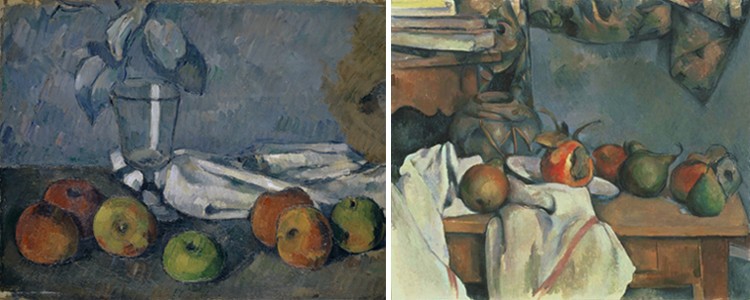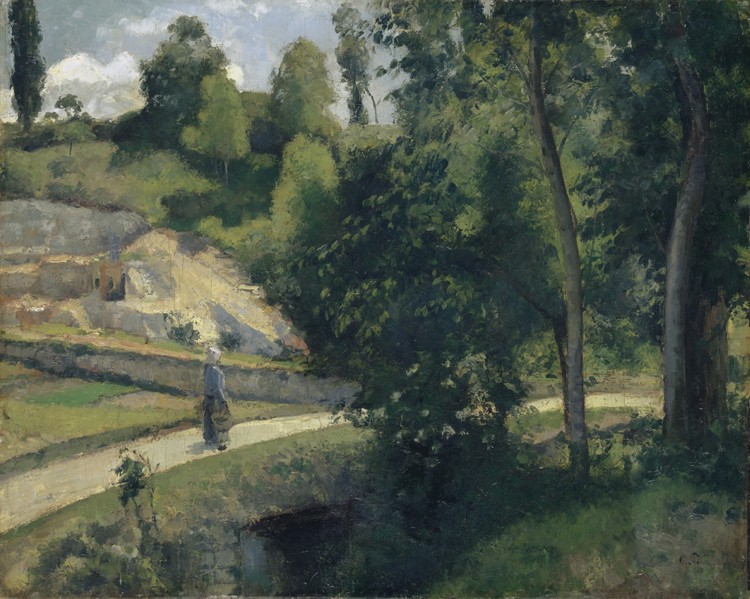In the Collection Comparisons series, we pair one work from Gauguin to Picasso: Masterworks from Switzerland with a similar work from the Phillips’s own permanent collection.

(left) Paul Cézanne, Glass and Apples, 1879–1882. Oil on canvas, 12 3/8 x 15 3/4 in. The Rudolf Staechelin Collection © Kunstmuseum Basel, Martin P. Bühler (right) Paul Cézanne, Ginger Pot with Pomegranate and Pears, 1893. Oil on canvas, 18 1/4 x 21 7/8 in. The Phillips Collection, Washington, DC, Gift of Gifford Phillips in memory of his father, James Laughlin Phillips, 1939
Paul Cézanne painted almost 200 still lifes over the course of four decades. By the late 1870s, he focused on household items, such as clusters of fruit, cloth, and a vessel. In 1879, Cézanne produced a series of 11 still lifes, each arranged on a chest set before bluish floral wallpaper. Rudolf Staechelin purchased Glass and Apples, at left above, in 1918.
Painted over a decade later, The Phillips Collection’s Ginger Pot with Pomegranate and Pears by Cézanne (above right, and on view in a gallery adjacent to the special exhibition) shares formal motifs with the Staechelin example, including a display of fruit set on furniture before similar wallpaper. Both paintings were formerly owned by Impressionist artists: the Phillips still life was in Claude Monet’s collection, while Staechelin’s canvas was featured in Ambroise Vollard’s first solo show of Cézanne’s work in 1895 and shortly thereafter purchased by Edgar Degas for 400 francs.
Close inspection of the two works side by side also reveals a key difference. While Cézanne keeps the focus in the foreground in Glass and Apples, the artist adds depth and complexity to Ginger Pot with Pomegranate and Pears by including a second table in the upper left portion of the painting as well as an artfully arranged piece of patterned cloth that hangs along the top edge of the composition.


